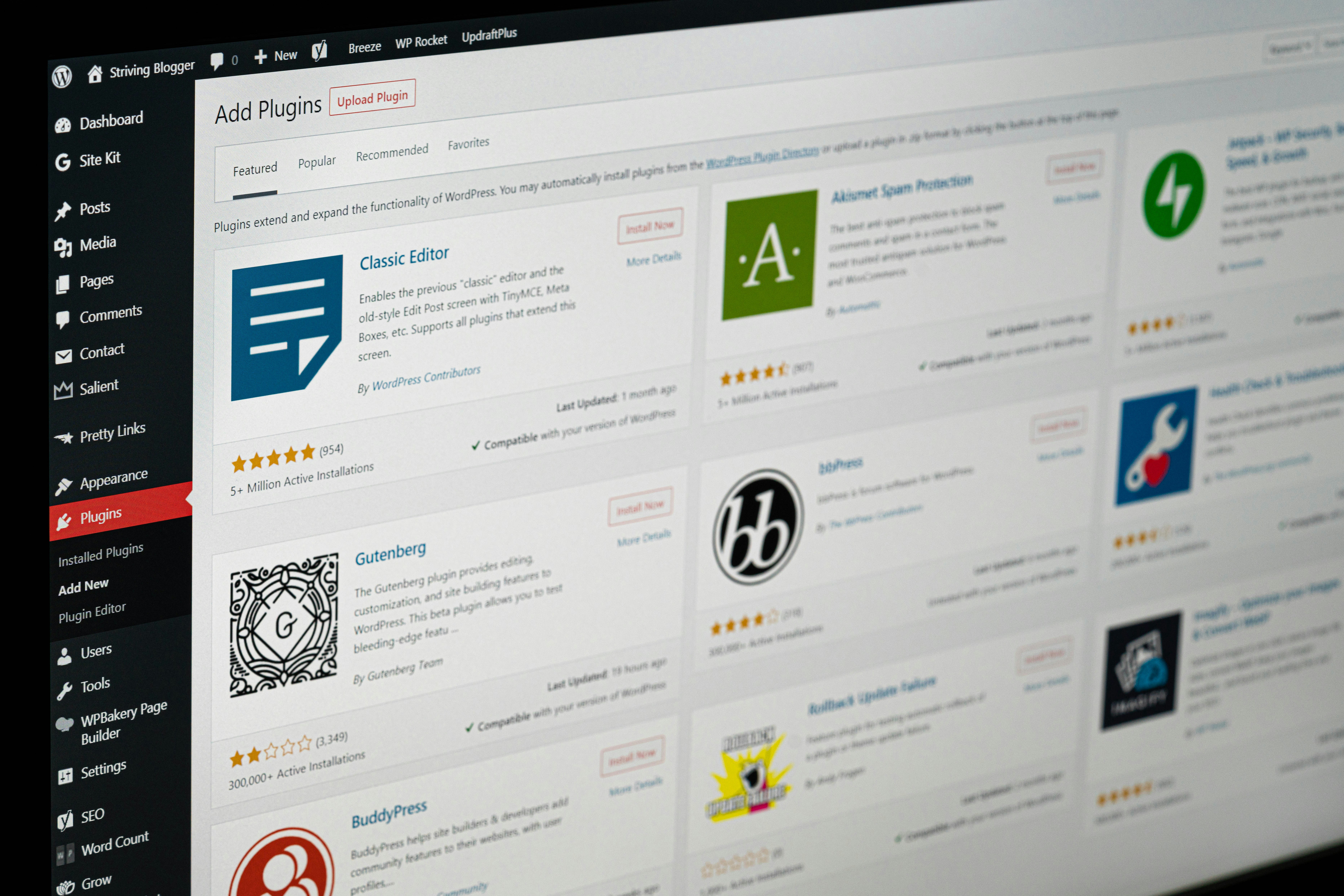
What is the difference between a post and a page template in WordPress?
WordPress, one of the most popular Content Management Systems (CMS) globally, offers various features and tools to create, manage, and publish content on the web. Two essential elements within WordPress that often cause confusion, especially among beginners, are "posts" and "page templates." Understanding the differences between these two can significantly improve how one manages content and designs a website using WordPress. This article aims to clarify these differences, focusing on their distinct characteristics, use cases, and how they impact the overall structure and navigation of a WordPress site.
Definition and Core Differences
Posts in WordPress are entries listed in reverse chronological order on your blog's home page or on the posts page if you have set one in your settings. Posts are often associated with blogs or news sections, where the content is timely and meant to be dynamic. Each post can be categorized, tagged, and is usually intended to invite interaction or comments from the community.
Page templates, on the other hand, are a feature of themes within WordPress that allow users to change the layout or functionality of a page. Page templates apply to individual pages to create unique styles or functionalities different from the default page setup. For example, a page template could be used to create a landing page, a contact page, or a custom home page that looks entirely different from the rest of the site.
Key Differences 🧑💻
-
Purpose and Use:
- Posts are used for dynamic content such as blog articles, news, events, and updates. They're meant to be timely and often encourage user engagement.
- Page templates are used to alter the look and functionality of a page, catering to specific needs such as different layouts for services, products, about us pages, etc.
-
Organization:
- Posts are organized using categories and tags, which help in navigating and filtering content based on topics or themes.
- Page templates do not use categories or tags but are chosen on a per-page basis depending on the desired page layout or function.
-
SEO and Archiving:
- Posts are generally part of a feed and get archived by date, category, and tags. This dynamic nature helps in keeping the site's content fresh for search engines.
- Page templates affect the presentation and layout of a page but don’t directly influence archiving since pages are typically static and not listed by date.
-
Interactivity:
- Posts usually include a comment section to engage with the audience. They're part of a conversation.
- Page templates are more about providing information in a specific format and may not necessarily include interactive elements like comments.
-
Customization:
- Posts follow the styling dictated by the theme for consistency but can be individually customized using blocks or post formats if the theme supports them.
- Page templates offer a higher level of customization for individual pages, allowing for unique layouts and functionalities outside the standard post model.
Practical Applications
Understanding when to use a post versus when to opt for a custom page template can significantly impact the user experience and functionality of a WordPress site. For instance, a news section would benefit from using posts, as they are designed to handle frequent updates and enable easy navigation through archives. Conversely, creating a unique landing page that stands out from the rest of the site would be best achieved using a custom page template, allowing for creative freedom without affecting the standard post or page structure.
Further Exploration and Advanced Considerations
As you delve deeper into WordPress, understanding the foundational differences between posts and page templates is just the beginning. To fully harness the power of WordPress, consider exploring the following advanced considerations and best practices:
Hierarchical Structure and Navigation
While posts are inherently part of a flat structure, organized by categories and tags, pages (and by extension, page templates) can have a hierarchical structure. This means you can have parent pages and child pages, which is particularly useful for organizing large amounts of information in a logical manner. For example, a "Services" parent page could have child pages for each specific service offered. This hierarchical structure also plays a significant role in navigation and the overall user experience, allowing visitors to easily drill down through layers of content.
Custom Post Types and Taxonomies
Beyond the basic post/page dichotomy, WordPress allows the creation of custom post types and taxonomies, further expanding the ways in which content can be organized and presented. Custom post types can be thought of as a way to create your own definitions of "posts" and "pages" tailored to specific content needs, such as a portfolio, testimonials, or product listings. Similarly, custom taxonomies go beyond categories and tags, allowing for custom grouping and filtering of posts, pages, and custom post types. This advanced feature unlocks a whole new level of customization and content management capabilities.
Theme and Plugin Interactions
The choice between using a post or a page template can also be influenced by the active WordPress theme and installed plugins. Some themes come with built-in custom page templates, while others are designed to be highly customizable using page builders. Similarly, certain plugins may add functionality or customizations that are specific to either posts or pages. Understanding how your theme and plugins interact with posts and page templates can help you make more informed decisions about which to use in different scenarios.
Performance Considerations
It's also important to consider the impact of posts and page templates on website performance. Pages, especially those using custom templates with complex layouts or heavy media content, can be more resource-intensive than simple posts. On the other hand, a website with thousands of posts can also face performance issues if not properly optimized. Utilizing caching, optimizing images, and regularly reviewing your hosting plan are essential practices to ensure that neither posts nor pages negatively impact your site's loading times.
SEO Implications
Finally, it's crucial to consider the SEO implications of how you use posts and page templates. Posts, with their dynamic nature and regular updates, can help keep your site fresh and engaging to both users and search engines. However, well-structured and informative pages can also contribute significantly to your site's SEO, especially when they provide comprehensive information on a particular topic. Utilizing SEO best practices, such as proper use of headings, meta descriptions, and internal linking, is essential regardless of whether you're working with posts or pages.
Frequently Asked Questions about Posts and Page Templates in WordPress 🌗
A1: While WordPress does not offer a direct option to convert a post into a page or the other way around within the default user interface, this can be achieved through plugins designed for content conversion or by manually copying the content to the new format and adjusting the publication settings accordingly.
A2: To create a custom page template, you will need to have access to your WordPress theme's files. You can create a new PHP file, copy the contents of an existing page template file, and then modify it as needed. Be sure to include the proper header information at the top of your new file to make it recognizable as a page template in the WordPress admin area. Knowledge of PHP, HTML, and CSS is necessary to customize templates effectively.
A3: Page templates are specifically designed for pages and not for posts. However, WordPress themes may include "post formats" or custom designs for different types of posts. Additionally, custom single post templates can be created by modifying your theme files, although this requires knowledge of WordPress theme development.
A4: Yes, both posts and pages have the potential to rank equally well in search engine results. The key to SEO success lies in the quality and relevance of the content, the optimization of keywords, and adherence to SEO best practices, rather than the content type (post or page).
A5: The choice between using a page builder and a custom page template depends on your specific needs, skills, and the level of customization required. Page builders offer a user-friendly interface and flexibility without the need for coding, making them suitable for users who prefer a more visual approach. Custom page templates offer more control and efficiency in terms of performance but require knowledge of coding. Both methods have their advantages and can be used effectively depending on the project's requirements.
A6: Choosing the right page template involves considering the purpose of the page and the layout that best suits the content you plan to present. Review the available templates in your WordPress theme, and try them out to see how they look with your content. Consider custom page templates if the existing ones do not meet your needs.
A7: Absolutely. While posts are typically used for blog articles and dynamic content, pages can be used for static content such as an "About Me" or "Contact" page. Utilizing both posts and pages can help organize your site's content effectively and improve the user experience.
A8: Regular updates to your page templates are not usually necessary unless you want to change the design or functionality of your pages. However, it's important to keep your WordPress theme and plugins updated to ensure compatibility and security.
A9: Yes, you can use the same template for both posts and pages in WordPress. However, it is more common to have separate templates for posts and pages to cater to their specific needs. This allows you to have different layouts, styling, and functionality based on the type of content being displayed.
A10: Yes, you can customize the post and page templates in WordPress to match your website's design and branding. These templates are generally created using PHP, HTML, and CSS, and can be modified according to your specific requirements. It is recommended to create child themes or use a custom theme to ensure your modifications are not overwritten during theme updates.
Conclusion
While both posts and page templates are crucial components of WordPress content management, they serve distinctly different purposes. Posts are best suited for dynamic, chronological content intended to engage and grow a community around your website. Page templates, however, are your go-to tool for crafting unique pages that require a specific layout or functionality not provided by the default WordPress theme. Understanding these differences empowers users to make informed decisions when building and managing a WordPress site, ensuring that the content not only looks appealing but is also well-organized and accessible to visitors.
The differences between posts and page templates is a fundamental aspect of becoming proficient in WordPress. However, the journey doesn't stop there. By exploring hierarchical structures, custom post types, theme and plugin interactions, performance considerations, and SEO implications, you can further refine your approach to content management in WordPress. This holistic understanding not only enhances the functionality and user experience of your website but also contributes to its success in the digital landscape.









